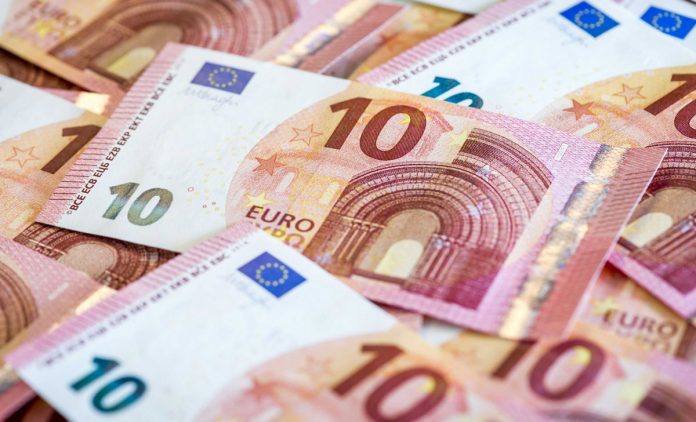The majority of Europeans over the age of 30 can certainly remember January 1, 2002, when the first new euro bills could be pulled out of ATMs across the continent, having replaced their marks, francs, liras, pesetas, gulden. I have a special memory of the introduction of the euro 20 years ago.
On New Year’s Day 2002, I interviewed Romano Prodi, then President of the European Commission, in Vienna. He praised the design of the banknotes by Austria’s Robert Kalina. When I objected and mentioned that there were no personalities, only abstract architectural elements, he said that Goethe, Dante or Molière could have been depicted, “but then the argument would have started about who would be on the highest banknotes.”
Prodi also stressed that the euro would strengthen the European economy and do much to develop a European identity.
That prediction has come true. Hardly any other element is associated with “the European Union” as much as the common currency. For younger people, in particular, the euro, which is the official currency in 19 European countries, as well as in six other nations within Europe, has become a part of their everyday lives.
In the EU’s single market, the euro facilitated and promoted cross-border trade. It has also proved its worth internationally by quickly becoming the world’s most important reserve currency after the dollar.
The early pains that the single currency endured were, however, severe. The German government, in particular, knew that a majority of Germans wanted to hold on to the Deutschmark. Helmut Kohl, the German chancellor at the time, saw the common currency as an opportunity for the members of the EU to grow further together.
At Germany’s insistence, a cap on new annual debt (3 percent) and on total debt (60 percent of GDP) had previously been introduced and enshrined in the “Stability and Growth Pact.” But when countries like Germany and France violated these requirements, sanctions were not imposed – as was intended. This encouraged smaller countries to take on debt that they could not afford.
The euro has been accused of having triggered price increases. In fact, inflation rates were higher before the euro replaced the national currencies. But in some areas, such as the restaurant trade, the euro led to noticeable price jumps soon after its introduction.
American experts in particular had not given the euro a long future without a common fiscal policy with harmonized tax rates. In fact, imbalances in the current account deficits, triggered by inflation caused by excessive borrowing, soon led to major problems in the eurozone. The GIISP countries (Greece, Italy, Ireland, Spain and Portugal) were the most affected. Greece, in particular, had been admitted to the eurozone based on falsified economic statistics. The threat of national bankruptcy in 2010, which would have possibly meant the end of the euro, could only be prevented with extensive financial aid and drastic austerity plans for Greece.
In 2012, the former president of the European Central Bank, and now current Italian Prime Minister, Mario Draghi, had been able to fend off attacks on the euro by financial speculators by promising to buy up bonds of EU members without limits, if necessary. With the words to do “whatever it takes“, Draghi saved the euro.
Since then, opponents of the euro, who have always warned against a “debt union”, in which countries with balanced budgets would have to come to the aid of deficit sinners, have seen their fears confirmed. Recently, there has been growing criticism of the European Central Bank for holding on to low-interest rates, despite higher inflation, which has devalued savings deposits.
With billions in aid to boost the pandemic-damaged economy, the EU has moved even further away from the stability criteria. The new German government has announced that it will not forget about countries hit hard by the pandemic when it comes to Covid aid. Germany’s Finance Minister Christian Lindner, who had previously always ruled out a debt union, is now showing a willingness to compromise due to the fact that Germany also has a responsibility for the political stability of the entire EU and the cohesion of the eurozone. Furthermore, the European Central Bank is now studying the possibility of a “digital euro” to complement cash.
The balance sheet for the single currency can be seen as more or less positive. Other EU countries such as Poland and Croatia are considering joining the single currency. On its 20th birthday, the overarching assessment is that the euro has survived all crises and has contributed significantly to the stability of the EU.








